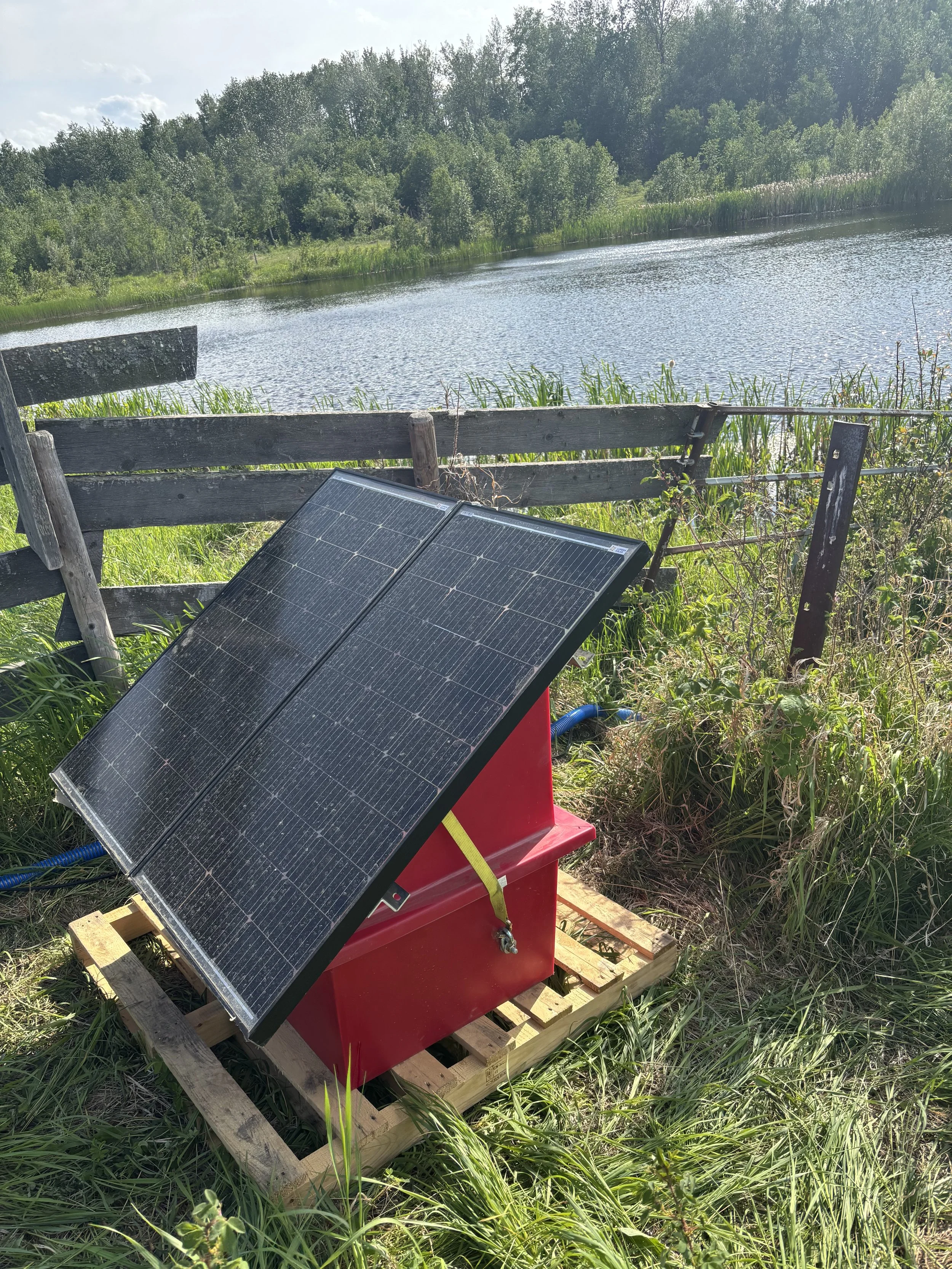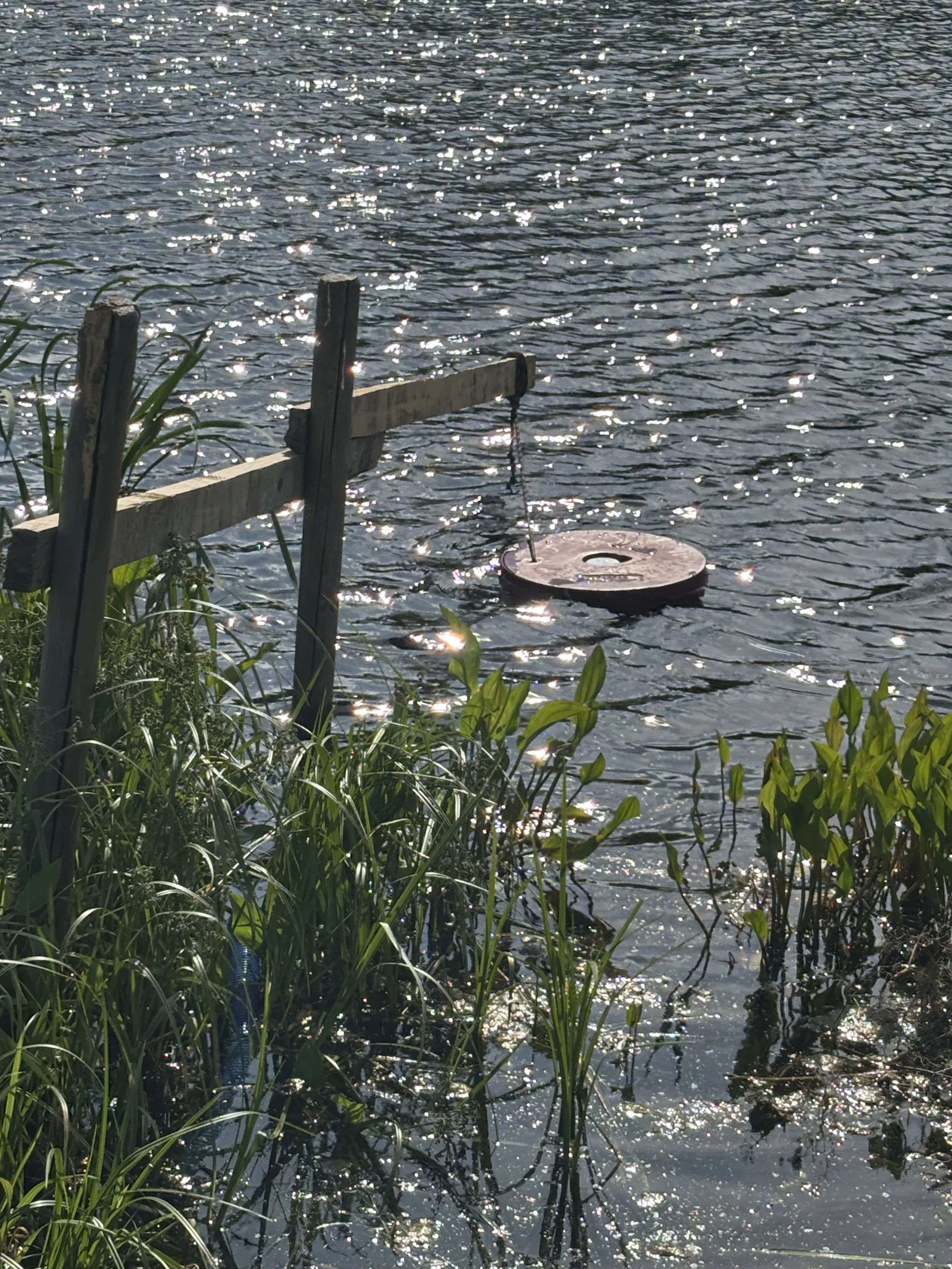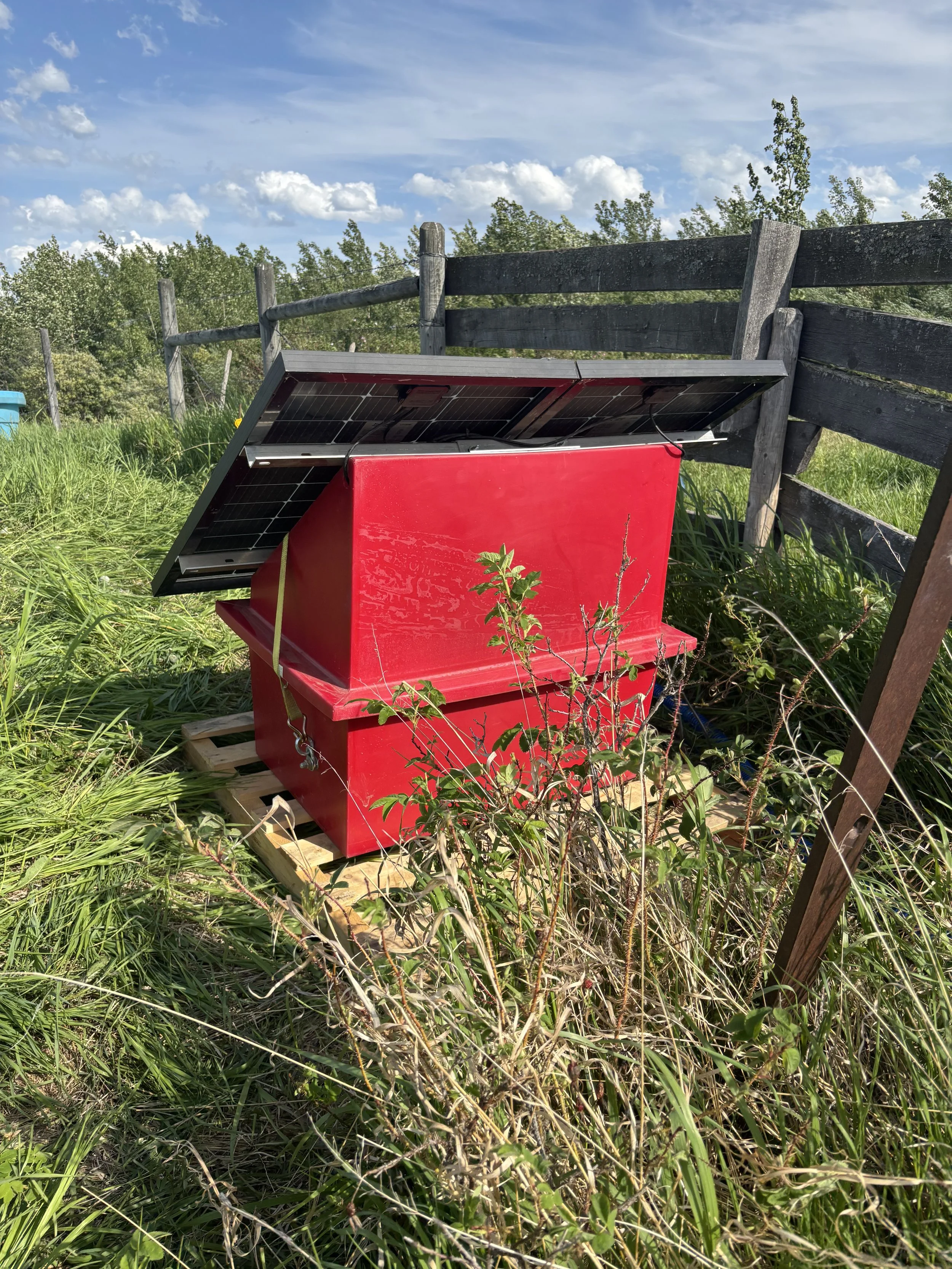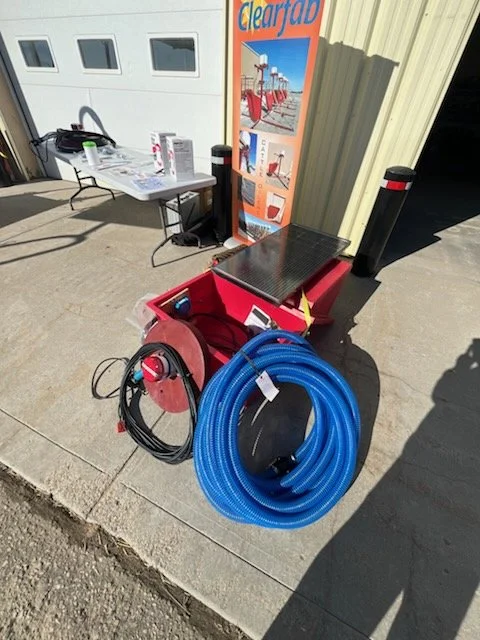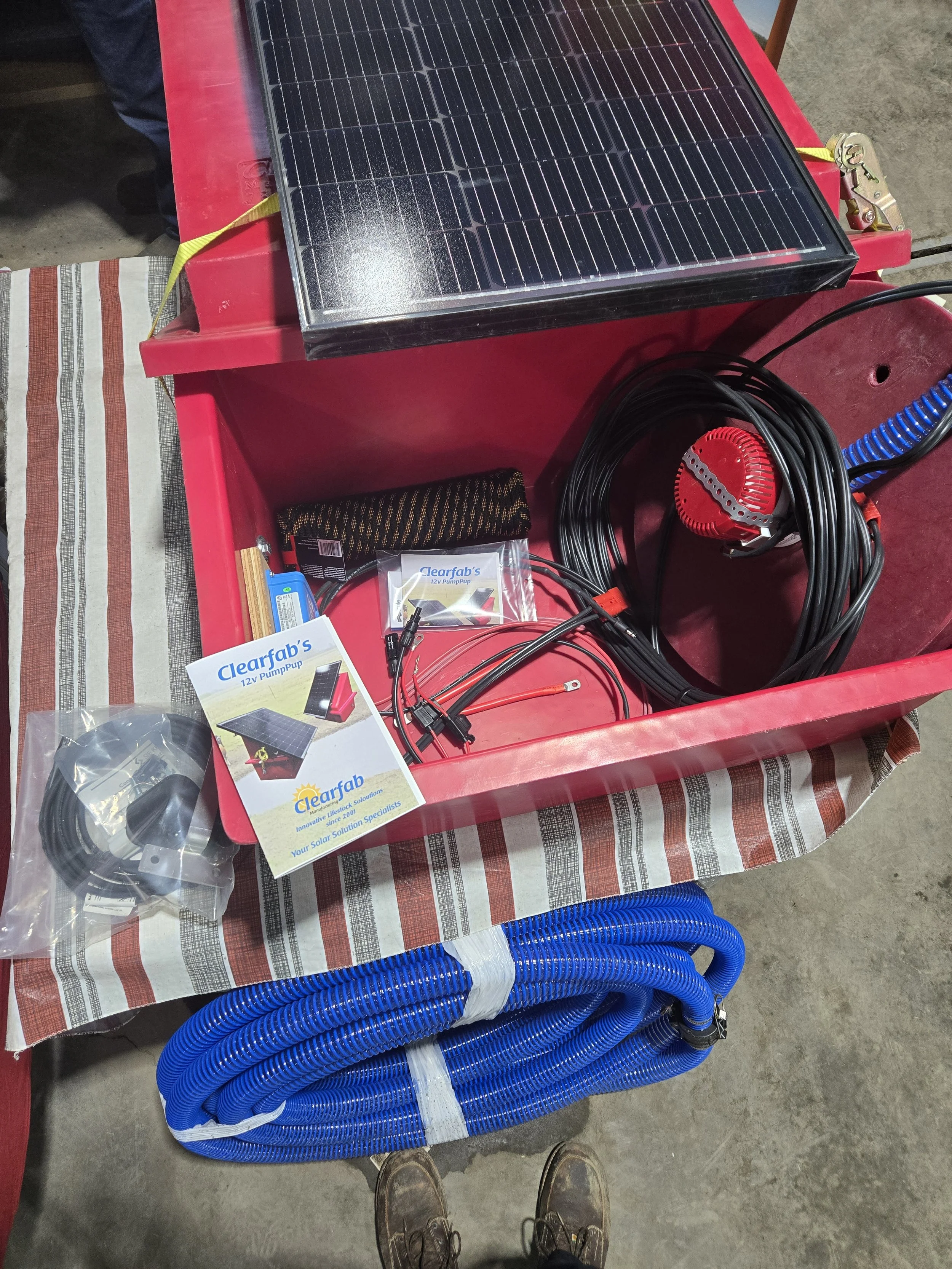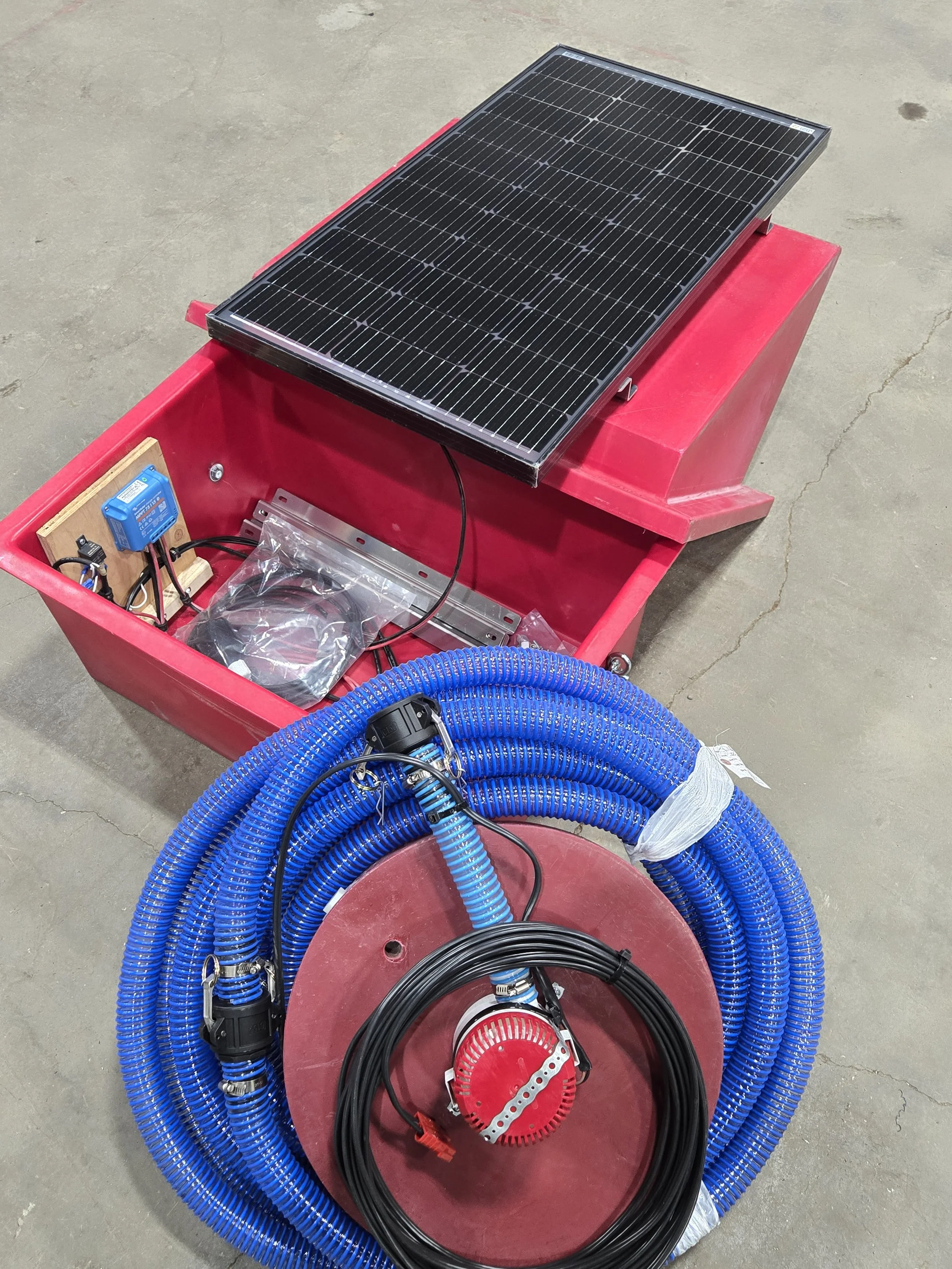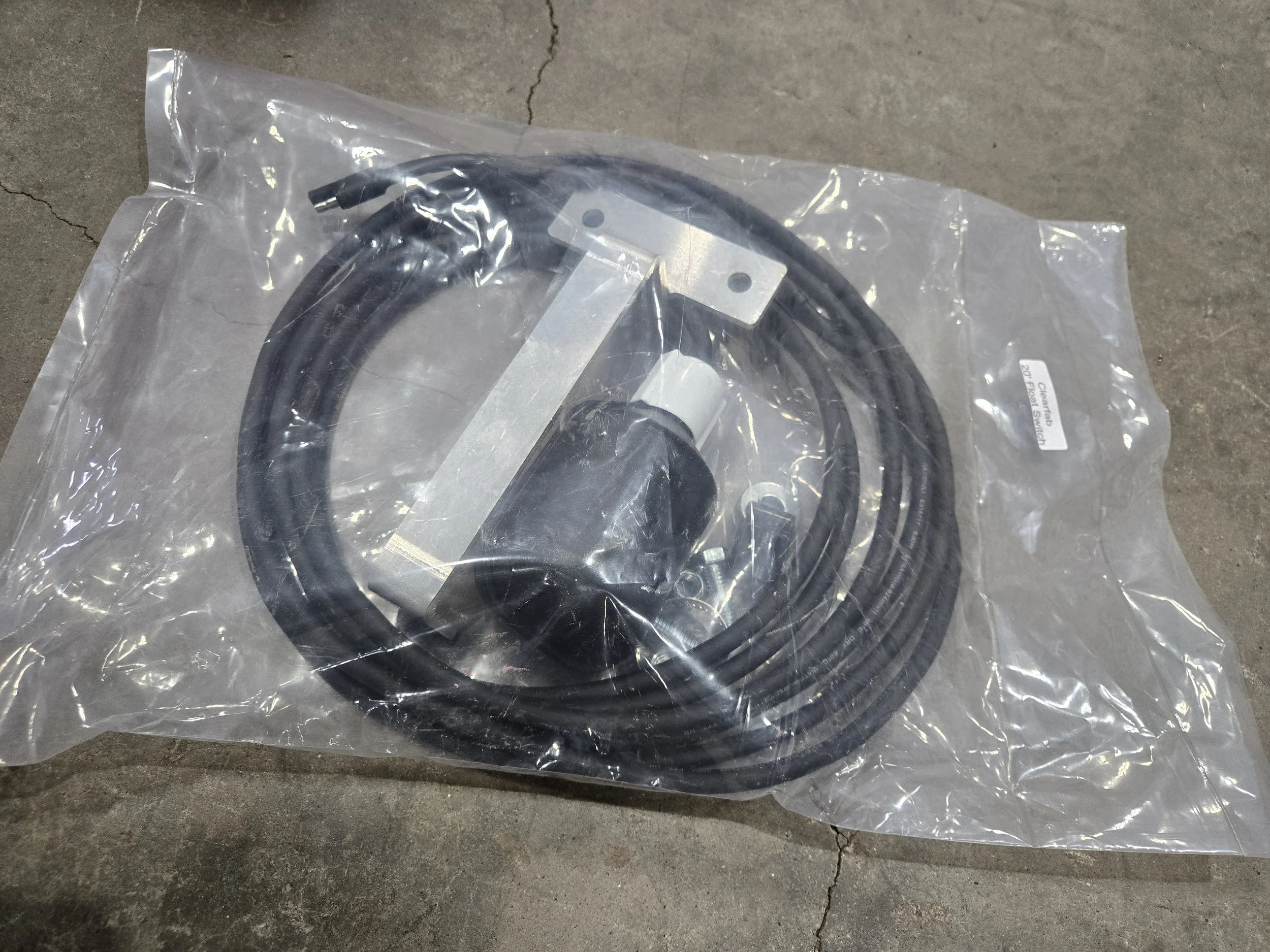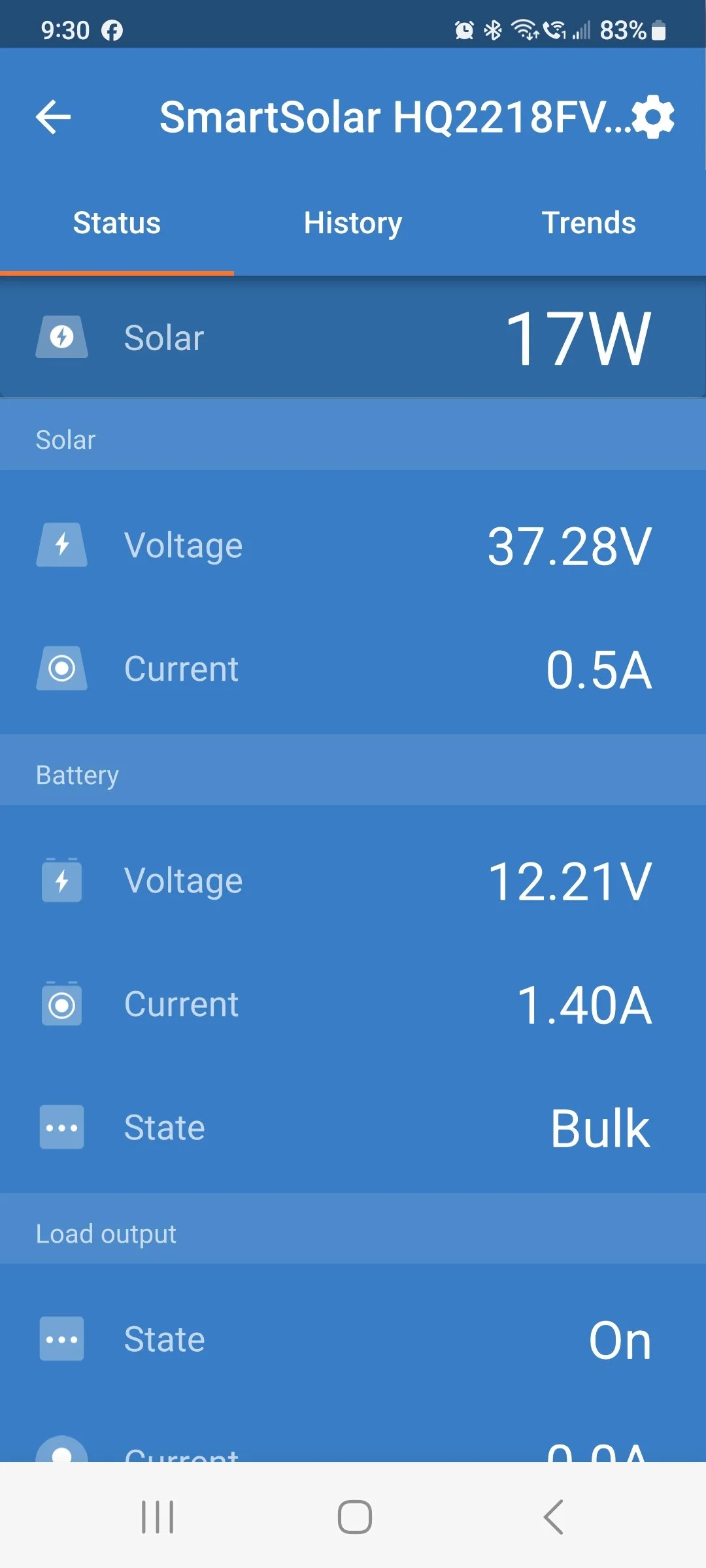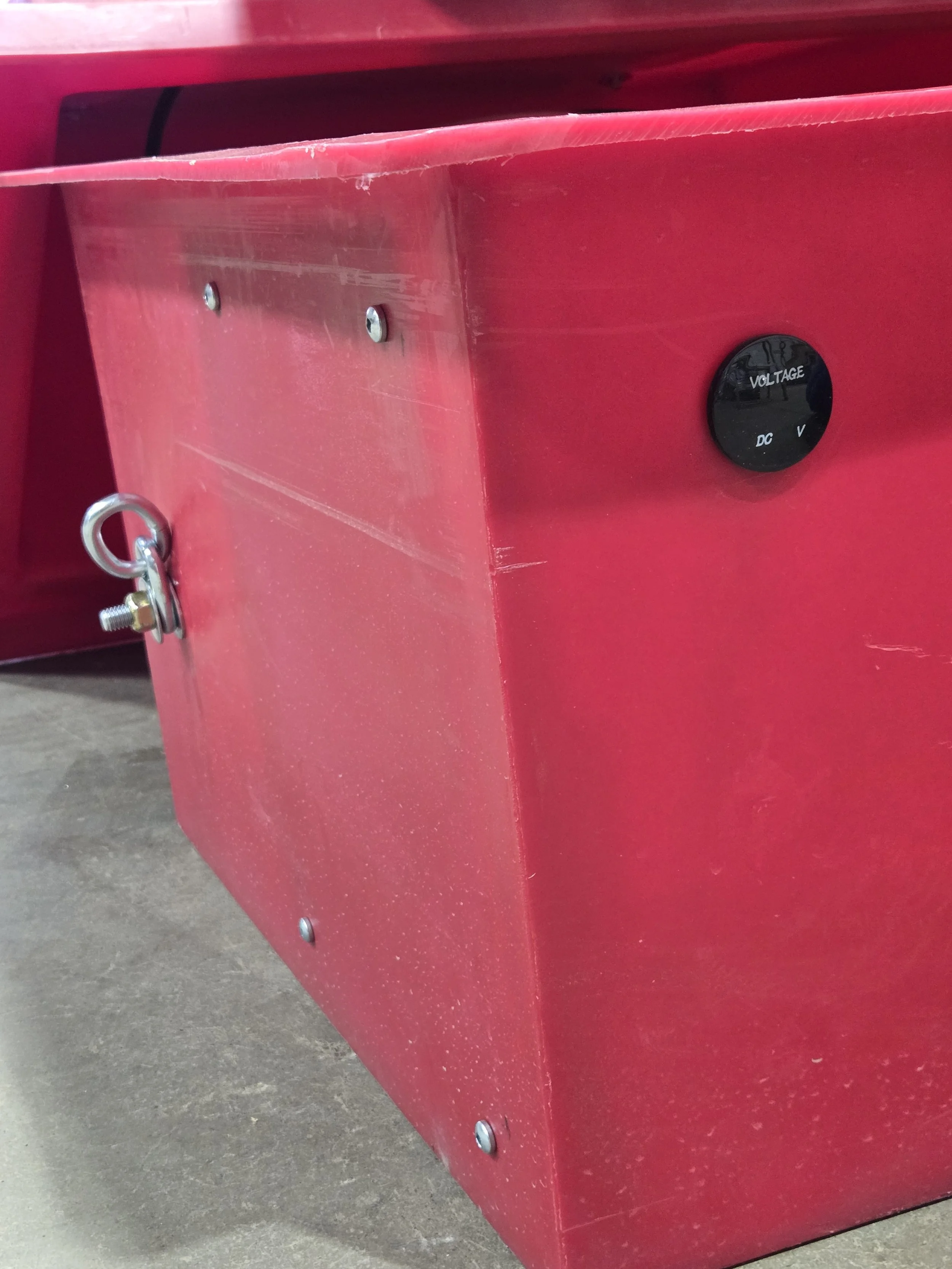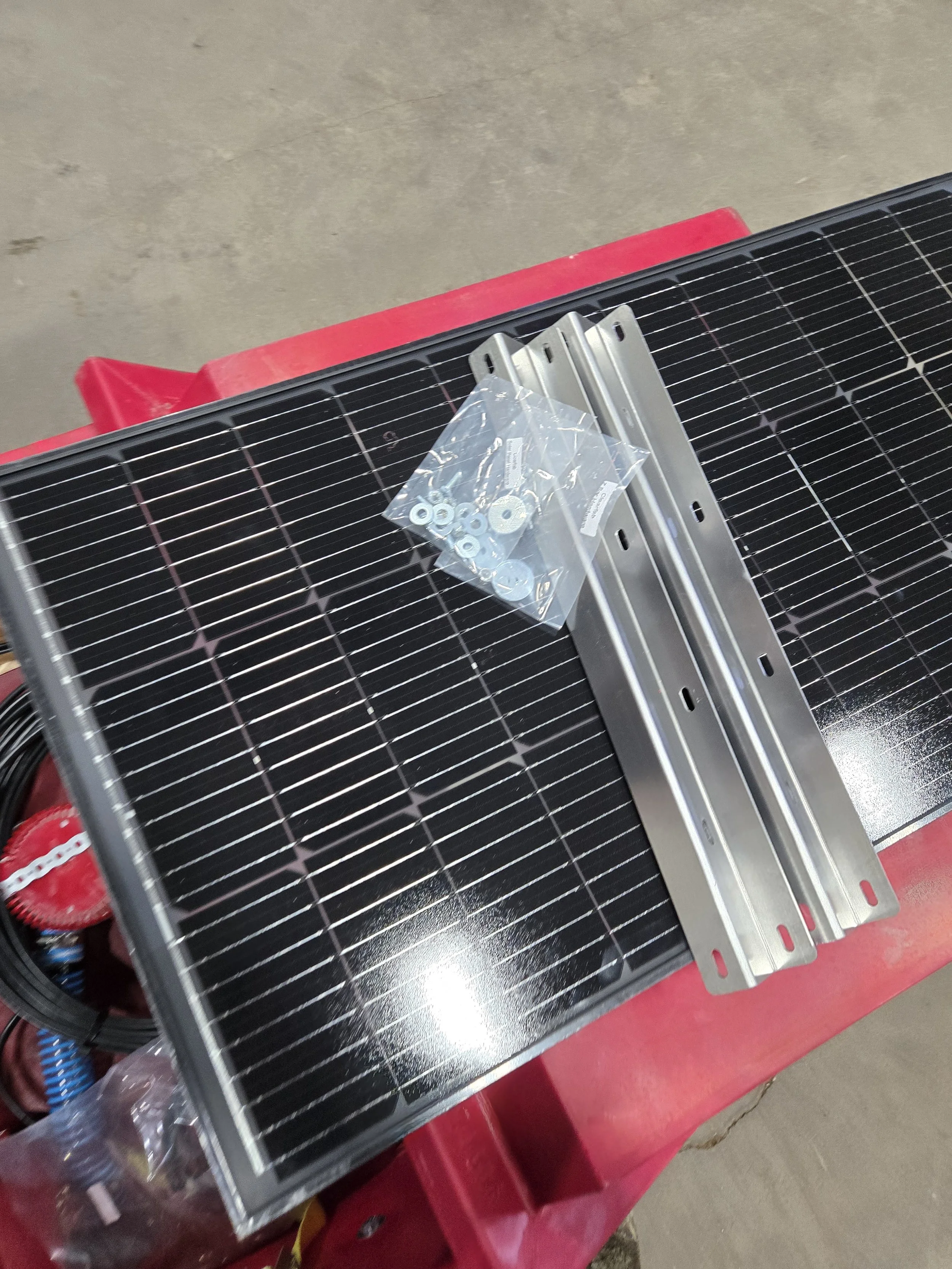
12V Pump Pup
Clearfab’s 12V Pump Pup is designed with convenience and efficiency in mind, coming standard as a complete 50-foot system. It is specifically engineered for those remote, out-of-the-way pastures where cattle numbers tend to be lower, ideally supporting herds of 75 animals or fewer. Each pump pup package includes everything needed for reliable operation: your choice of one or two 100 Watt solar panels, sturdy Z-bars with mounting hardware, a 75/15 Victron solar charge controller, a 35-foot float switch complete with mounting hardware, and the dependable Rule pump securely mounted to the float with 40 feet of wiring. Additionally, the system features Clearfab's durable sloped roof battery box to protect your power source, along with the necessary battery connecting wire for seamless installation.
For those looking to expand their capacity, adding a second solar panel will boost your system’s support for an additional 25 head of cattle. Including a second 12V battery also increases the overall system size and power sustainability. To assist with installation and upgrades, you can view detailed pictures below showcasing the wiring configurations required when adding either a second battery or solar panel to your setup.
“Getting my well system pumping again was top priority this summer. Henry was out here within 24 hours.
5-star service!”
– Kyle
Solar Panel Series vs Parallel:
What’s the difference?
In solar panel setups, series and parallel connections differ in how they affect voltage and current. Series connections combine voltages, while parallel connections combine currents. This means a series setup increases total voltage while keeping current the same, and a parallel setup increases total current while keeping voltage the same.
Very knowledgeable staff… Toby was able to help me diagnose my issues over the phone using the Victron app. These guys make it simple. Thanks Clearfab! – Brent

